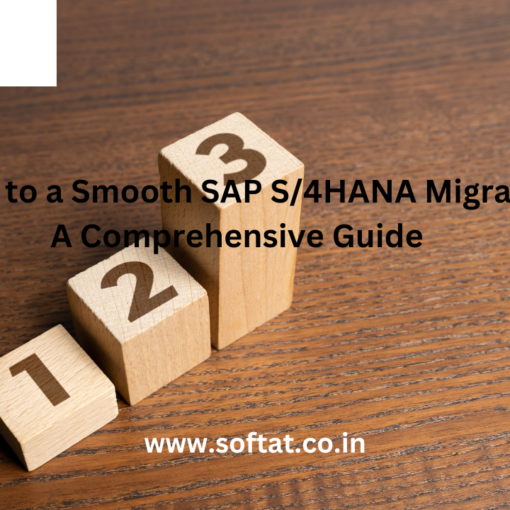What is SAP Greenfield?
SAP Greenfield is the process of implementing SAP S/4HANA without modifying existing systems. This is a brand-new system. This entails danger, but it also creates opportunities. (Brownfield)
Greenfield refers to a fresh start “on a greenfield site” in figurative meaning. Greenfield is a phrase that originated in urban planning and is now used in software development. Existing IT systems or individual advancements are not required to be considered in this approach.
Switching to SAP S/4HANA can be done in a number of ways. New Implementation or Re-implementation, which entails putting up a new IT system for a new context, is one of the options. Experts also refer to SAP Greenfield or SAP S/4HANA Greenfield when referring to an SAP S/4HANA implementation.
Greenfield vs Brownfield
SAP S/4HANA Greenfield
Implementation
There are a lot of terms floating around when it comes to SAP S/4HANA implementations and migrations. Different terminologies which mean the same thing, similar but unrelated words, and overlapping definitions are all examples of overlapping definitions.
“You’d be correct in assuming that a ‘greenfield’ SAP S/4HANA setup means starting from scratch with a fully new system and not bringing anything from the past with you.” “It’s a blank slate, with no previous development.”
Advantages
- Greenfield implementation is, without a doubt, the simplest method to get started with SAP S/4HANA. Legacy systems have been set up at certain companies in such a way that they are difficult to administer, with a lot of bespoke code, ad hoc solutions, and multiple settings. You can simply sweep away this unsortable, non-upgradable mess and start over with Greenfield.
- A greenfield strategy is frequently preferred for business reasons. “Businesses are never static; chances are, your company’s structure has evolved through time, and you used to rely on processes that are no longer viable.” Perhaps you’ve switched from selling items to selling services, or your regional footprint has changed. A greenfield deployment might be approached in stages if a corporation has many locations. Temporary solutions for intercompany moves and maybe parallel systems functioning at the same time will be required.”
Disadvantages
- A greenfield SAP S/4HANA implementation will be more expensive at first than other options. “This makes sense since you need to rethink the processes that worked well with the prior system.” Take billing, for example: you’ll have to start over with your perfectly excellent invoice templates.”
- Your company’s previous data will likwise be “lost.” Maintaining access to this data and ensuring legal compliance requires some planning ahead of time, but “that isn’t usually a significant concern or a major detractor.”
SAP Brownfield
Implementation
A Brownfield strategy is more like an upgrade than a Greenfield approach, which involves a complete reengineering of your SAP ERP. A brownfield SAP S/4HANA implementation, on the other hand, always starts with an existing system, with only a few key parts modified.
You can get SAP S/4HANA up and running while also migrating your existing SAP workflows and systems to the latest version of SAP S/4HANA using the Brownfield technique.
Because you don’t have to migrate anything, you may preserve your existing business procedures as well as the modifications you’ve been using to manage your data. The Brownfield technique allows you to assess and adjust old procedures while transferring the ones that are successful.
This analogy corresponds to a brownfield SAP S/4HANA migration that features SAP Fiori, the company’s unique new user interface. “Users can continue to use the same GUI interfaces they’ve been using for years, or they can embrace Fiori, which brings plenty of new features and benefits.”
Advantages
- The main benefit of Brownfield is that projects normally take less time to complete, causing less disturbance to your business.
- Because the things that function well for your firm don’t have to be rebuilt from scratch, a brownfield migration is less expensive.
- A brownfield strategy allows you to move to SAP S/4HANA without having to start from scratch and disrupting existing processes, by leveraging existing SAP landscape pieces such as supplier and partner interfaces.
- Certain clients choose small technical refinements of existing functionality and apps, but the migration is much lighter.
- You may also take your master data with you without having to extract and load it into a new system – the migration takes care of that for you.
Disadvantages
- The main problem with a brownfield migration is that it must be completed all at once, a process known as a “big bang.”
- “A brownfield can be problematic if your organization has a low tolerance for downtime. While the migrated system incorporates all of SAP S/4HANA’s benefits, you won’t be able to dramatically change how your system is set up. The new approach to implementation keeps the core ‘clean’ by executing developments on a separate platform rather than in the core. It’s worth noting that adopting this strategy to migration will necessitate a significant amount of rework, which might be done in a subsequent phase.”
What is the Greenfield approach in SAP?
The greenfield approach is a brand-new SAP S/4HANA implementation that starts from the ground up. The greenfield technique entails setting up and configuring a completely new network. It’s inconvenient and expensive, but it gives you a clean slate and complete freedom.
Greenfield’s approach is similar to migrating from a different ERP product altogether. In both cases, you’d start planning a new S/4HANA instance by analyzing your current business processes and then overhauling them to align with the software’s capabilities. After that, you’d install the software, move your data from the previous system, and teach your employees how to use it.
A greenfield approach might be what you’re looking for if you’re ready to take advantage of S/4HANA’s new features and find significant benefits in reengineering your operations.
What is Brownfield’s approach in SAP?
The brownfield approach entails improving an existing network while keeping some outdated components in place. Because it requires a software update, some data translation, and some business process adjusting, it’s similar to a regular upgrade. It’s still disruptive, but not early as a brand-new deployment.
This method may be preferable if you are risk conservative, wish to take a progressive approach to exploit S/4HANA’s capabilities, or are connected to the costs of a greenfield approach to S/4HANA.
S/4HANA data migration
You’ll need to execute some data transformation whether you go with a greenfield or brownfield approach. Full-scale data migration is required for a greenfield project. Anyone who has ever completed a system deployment understands how much effort it entails, especially when the business processes and data models that underpin those processes have changed dramatically.
You should anticipate that some data will be too costly to migrate in a greenfield project. Historical data, such as detailed receivables and payables records, will almost certainly not be transferred.





